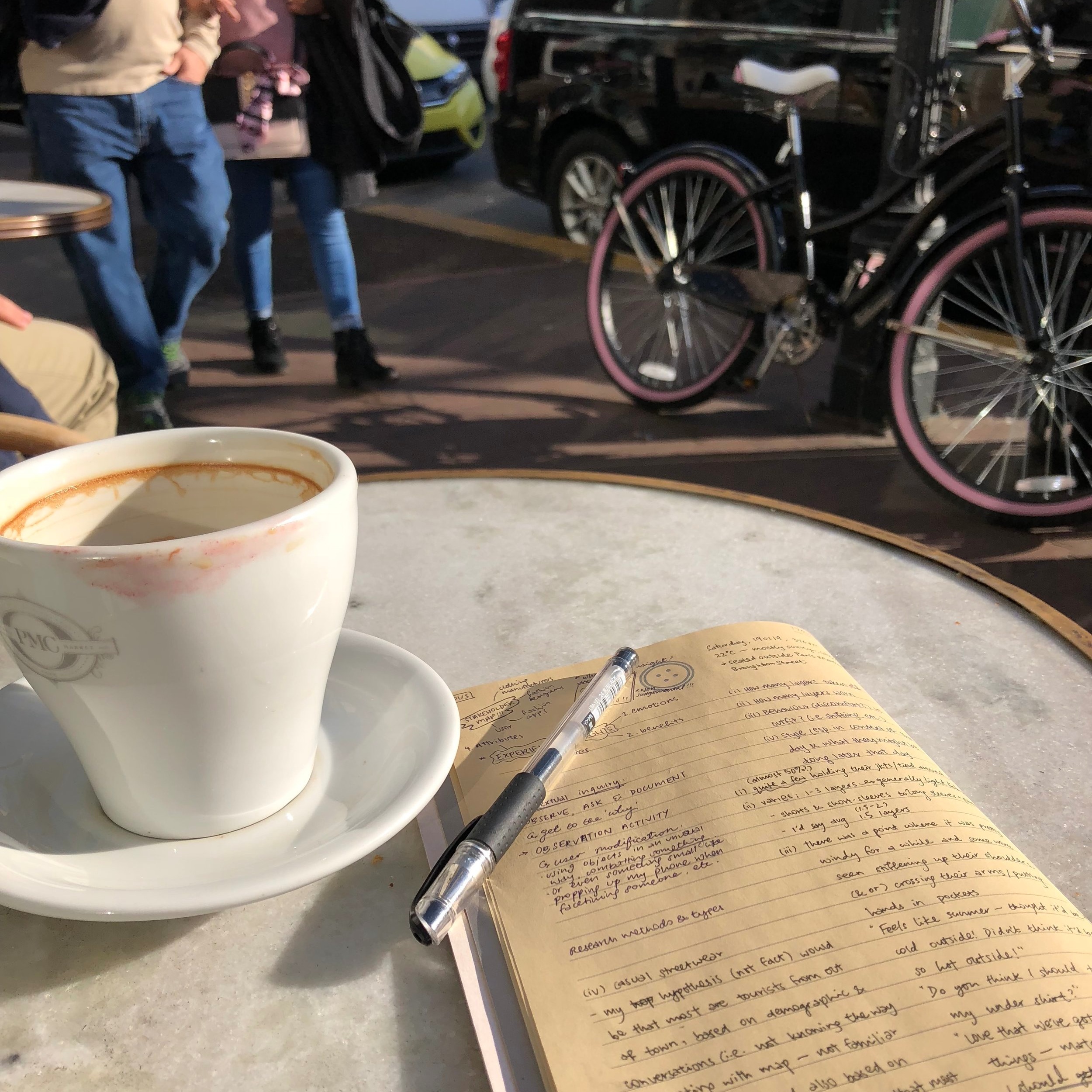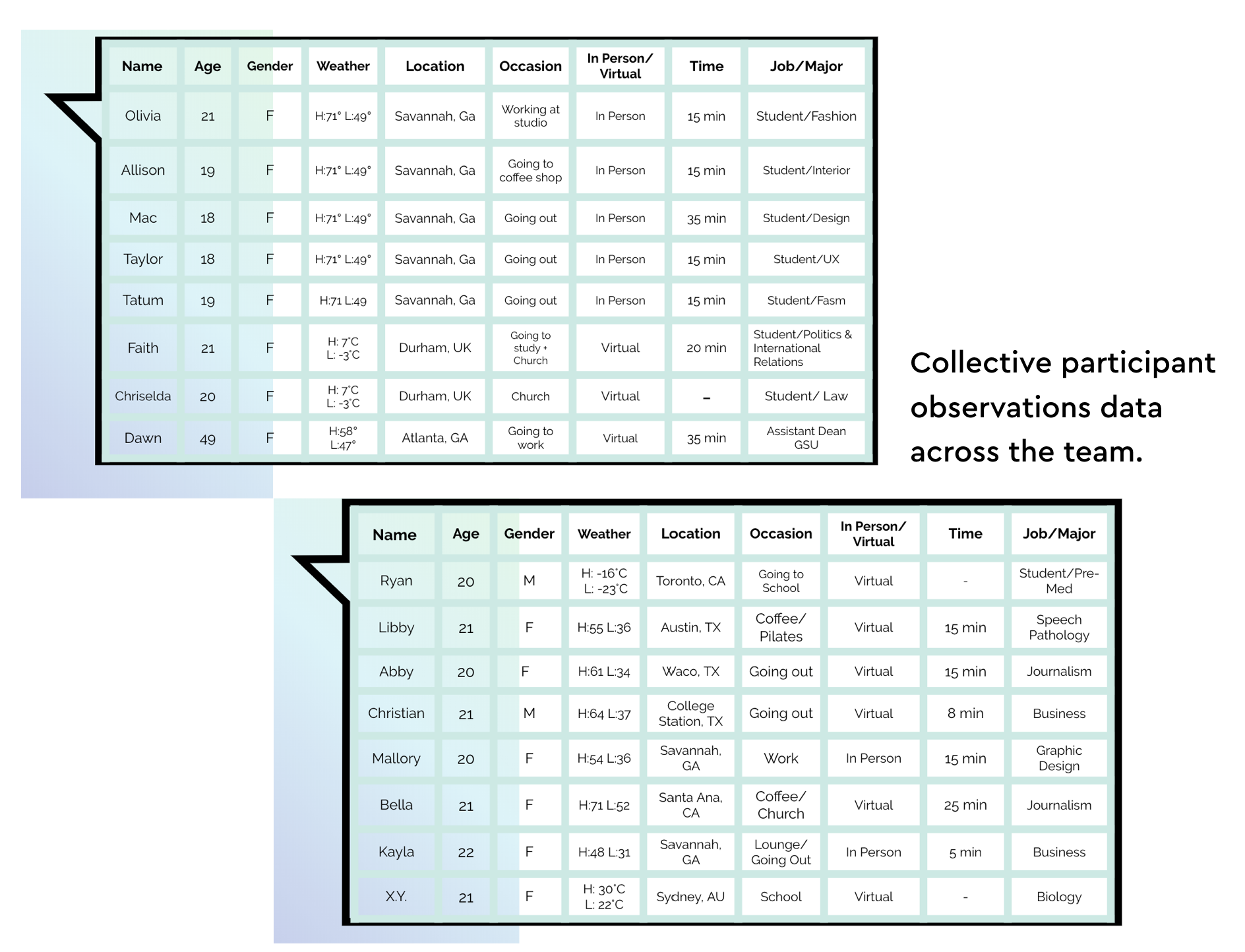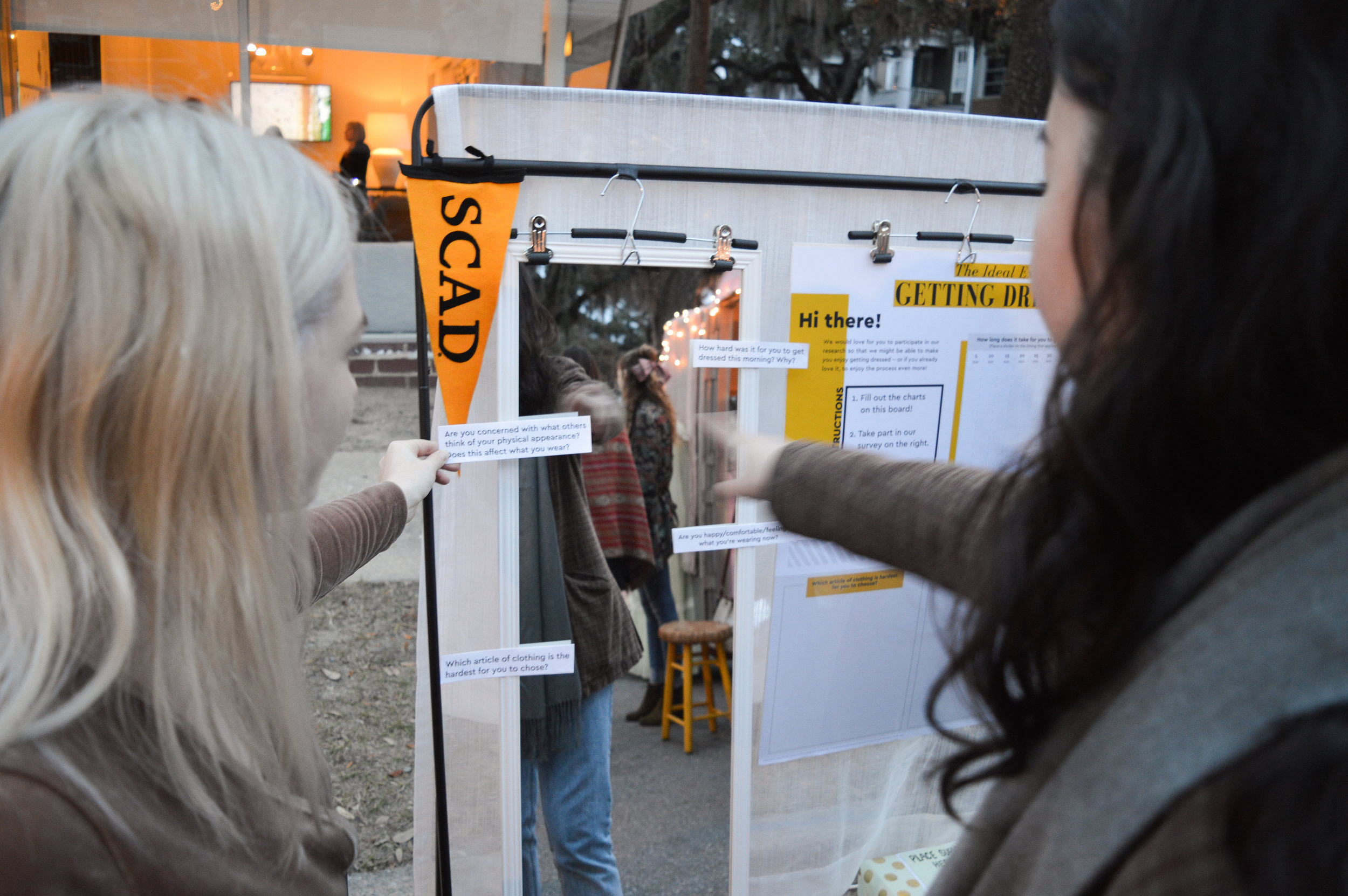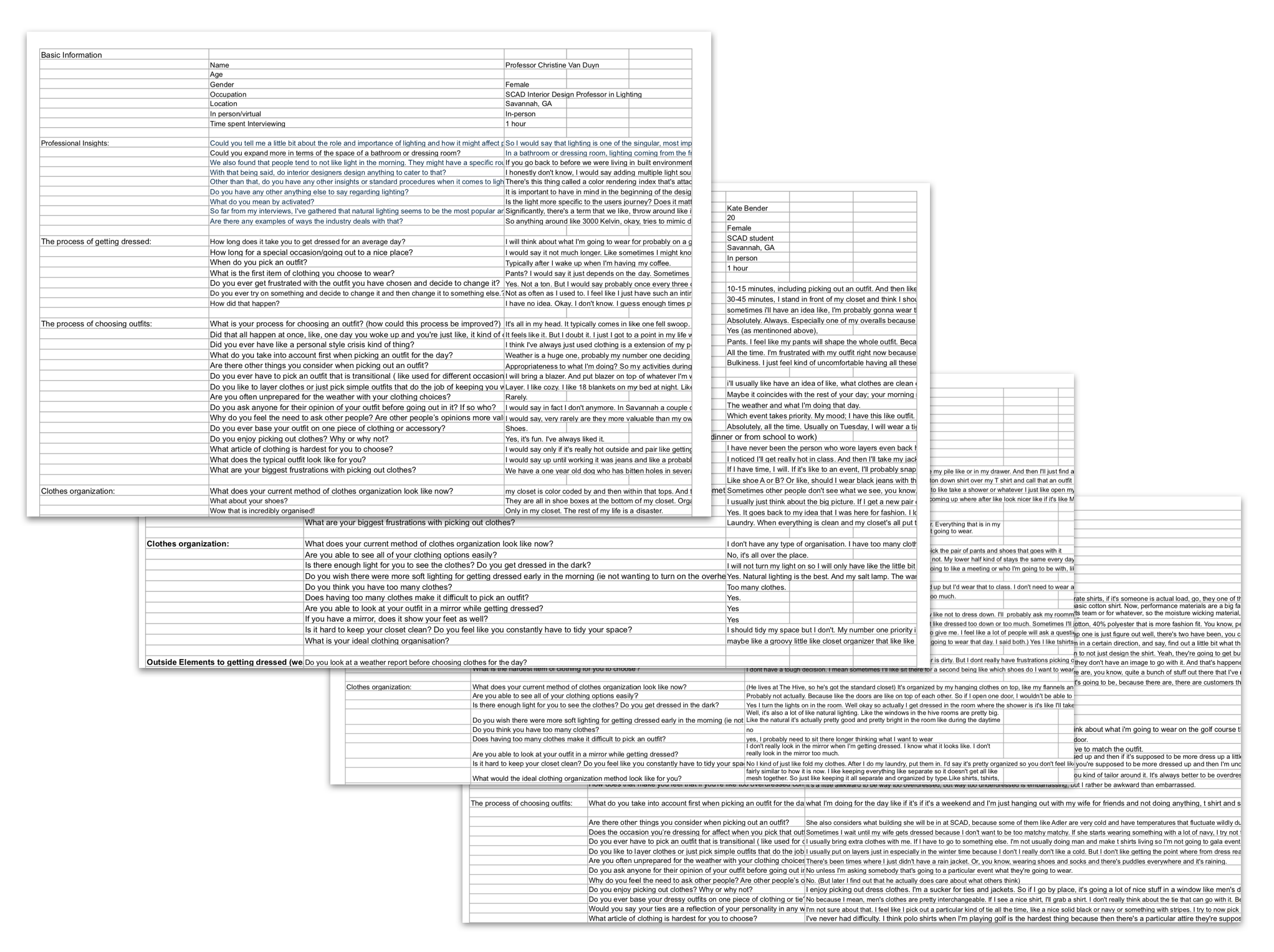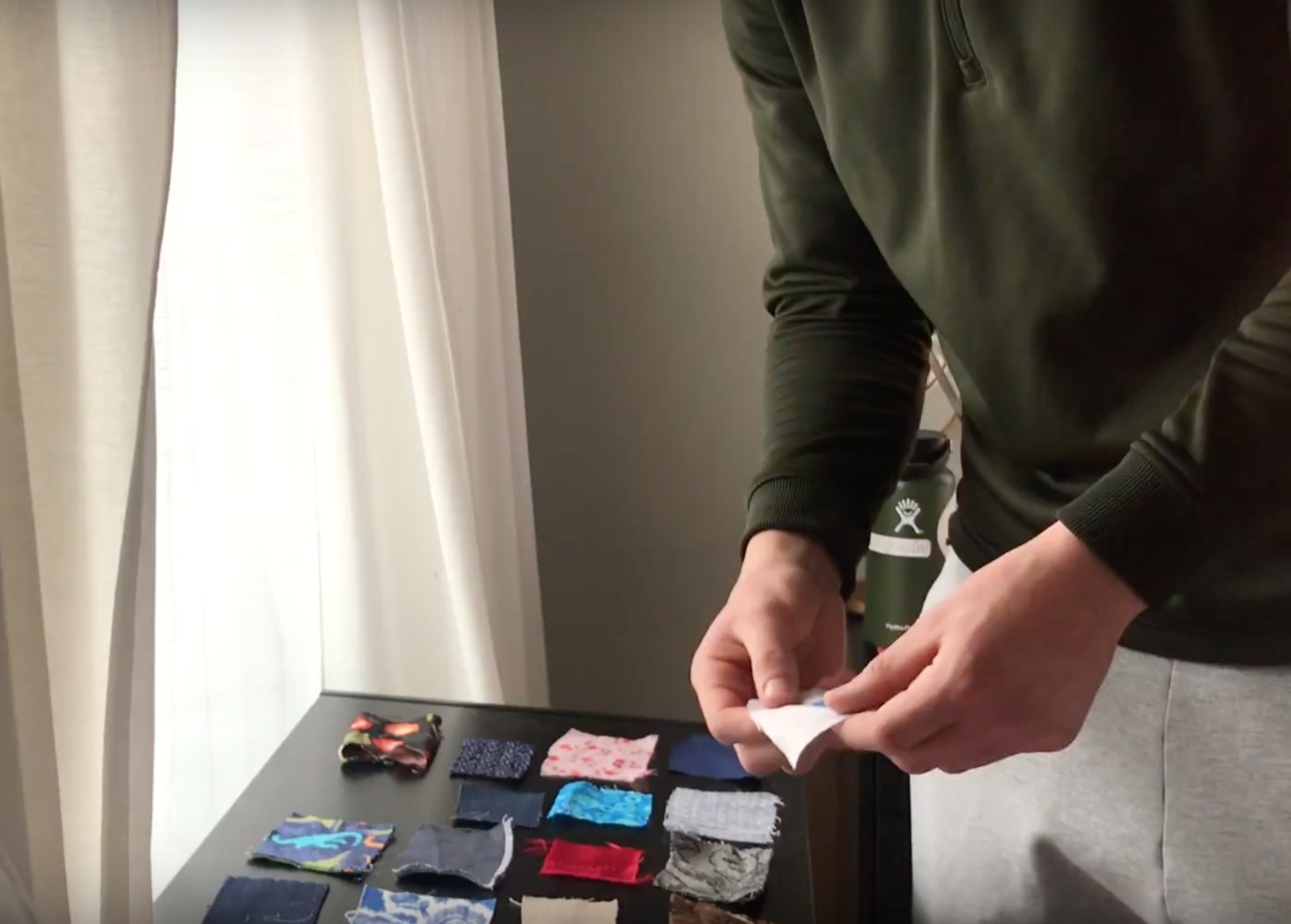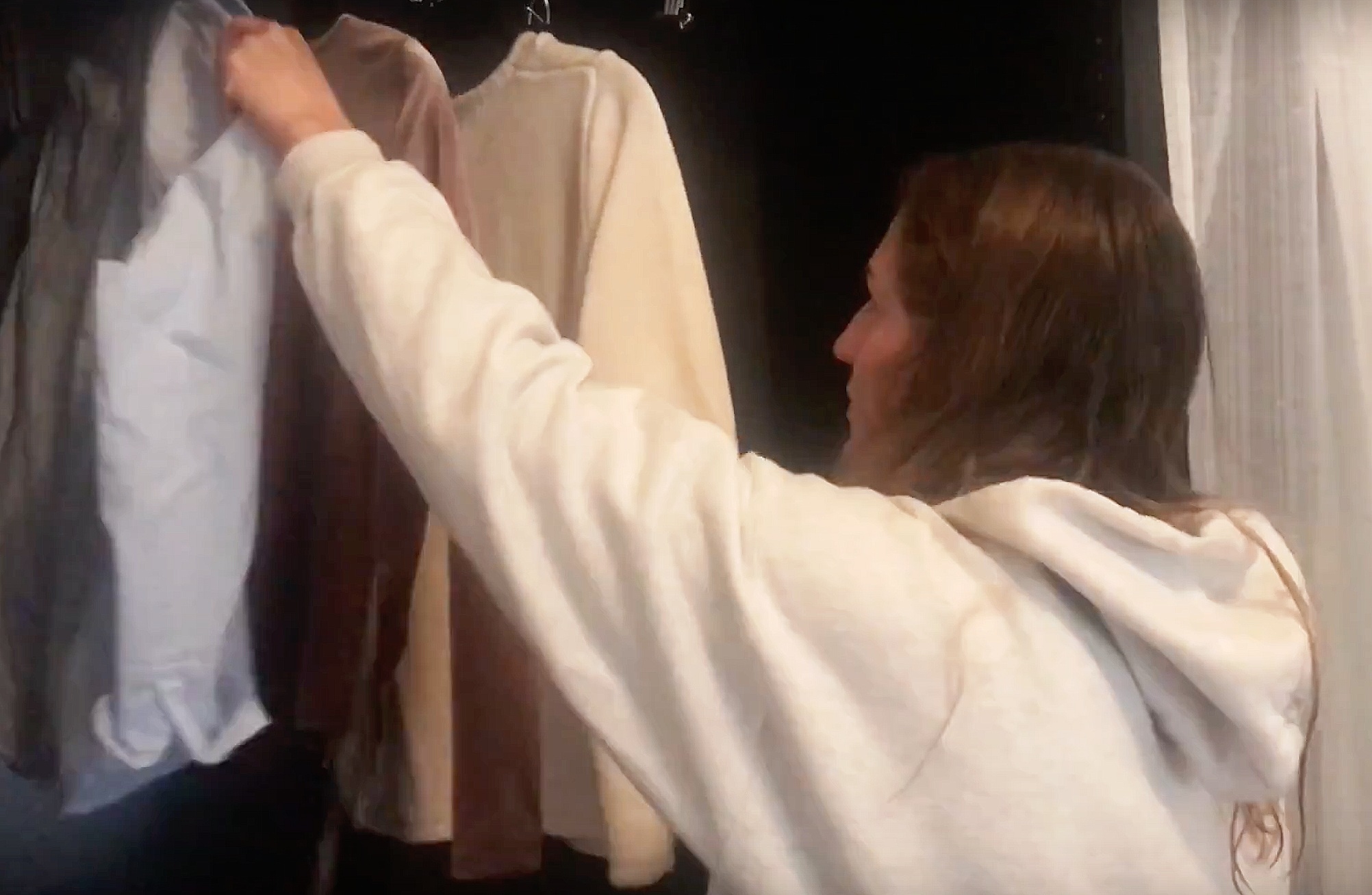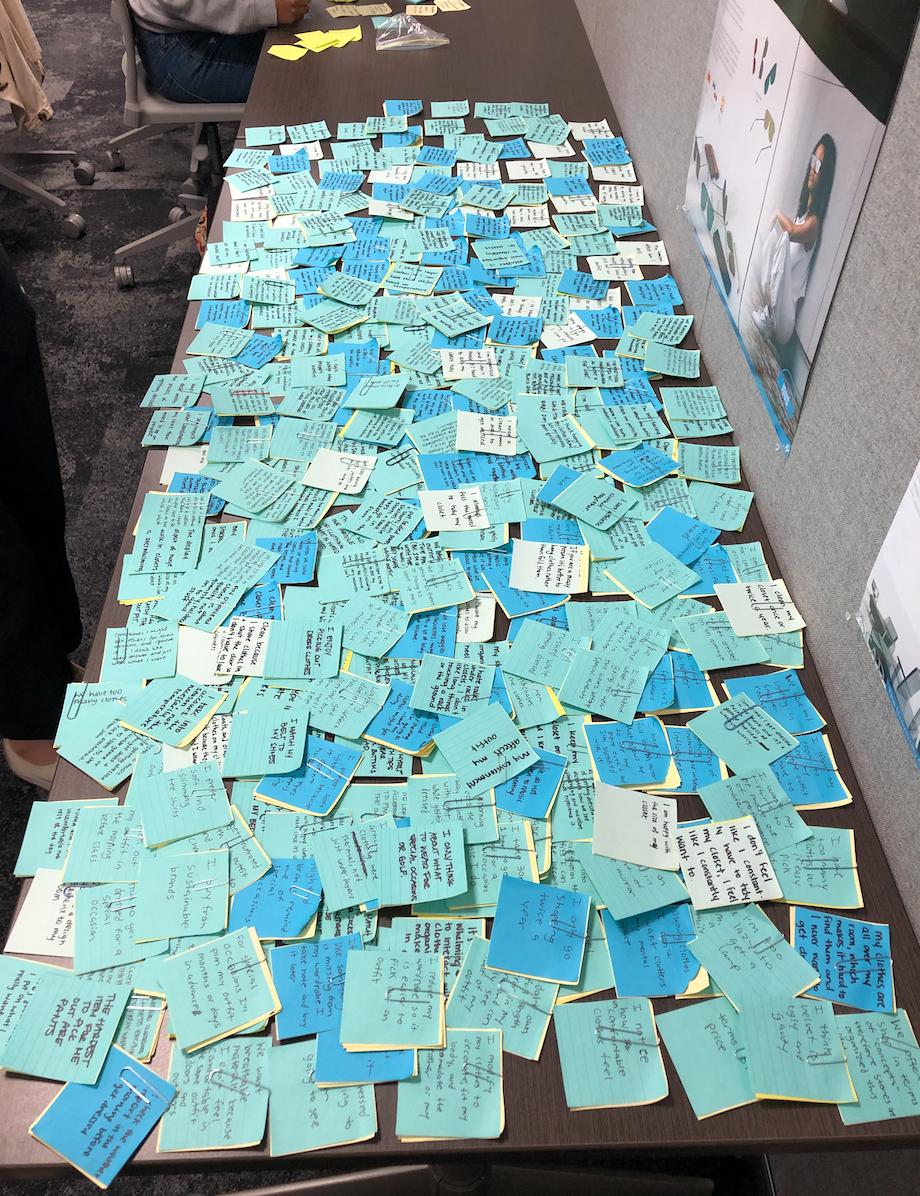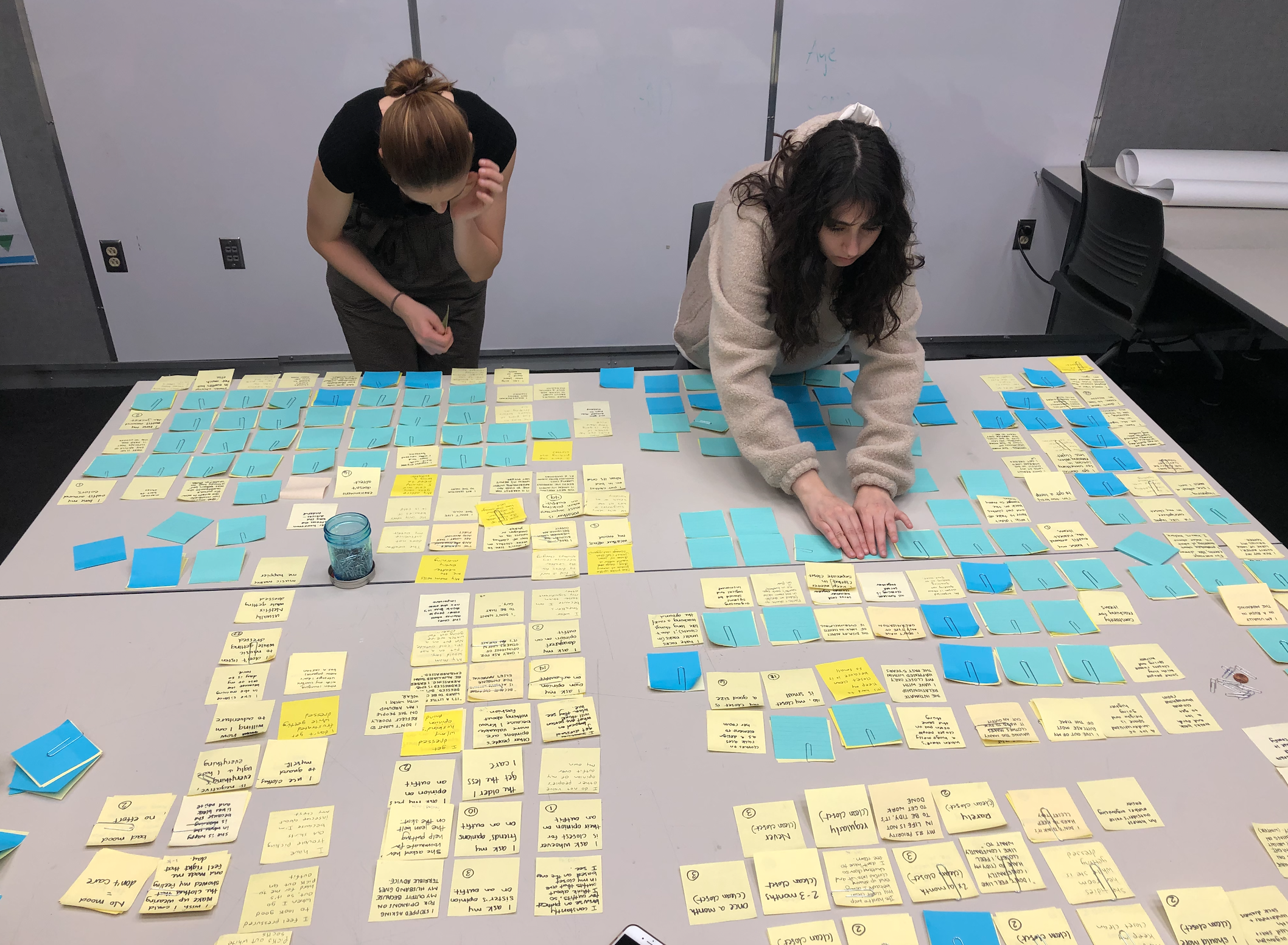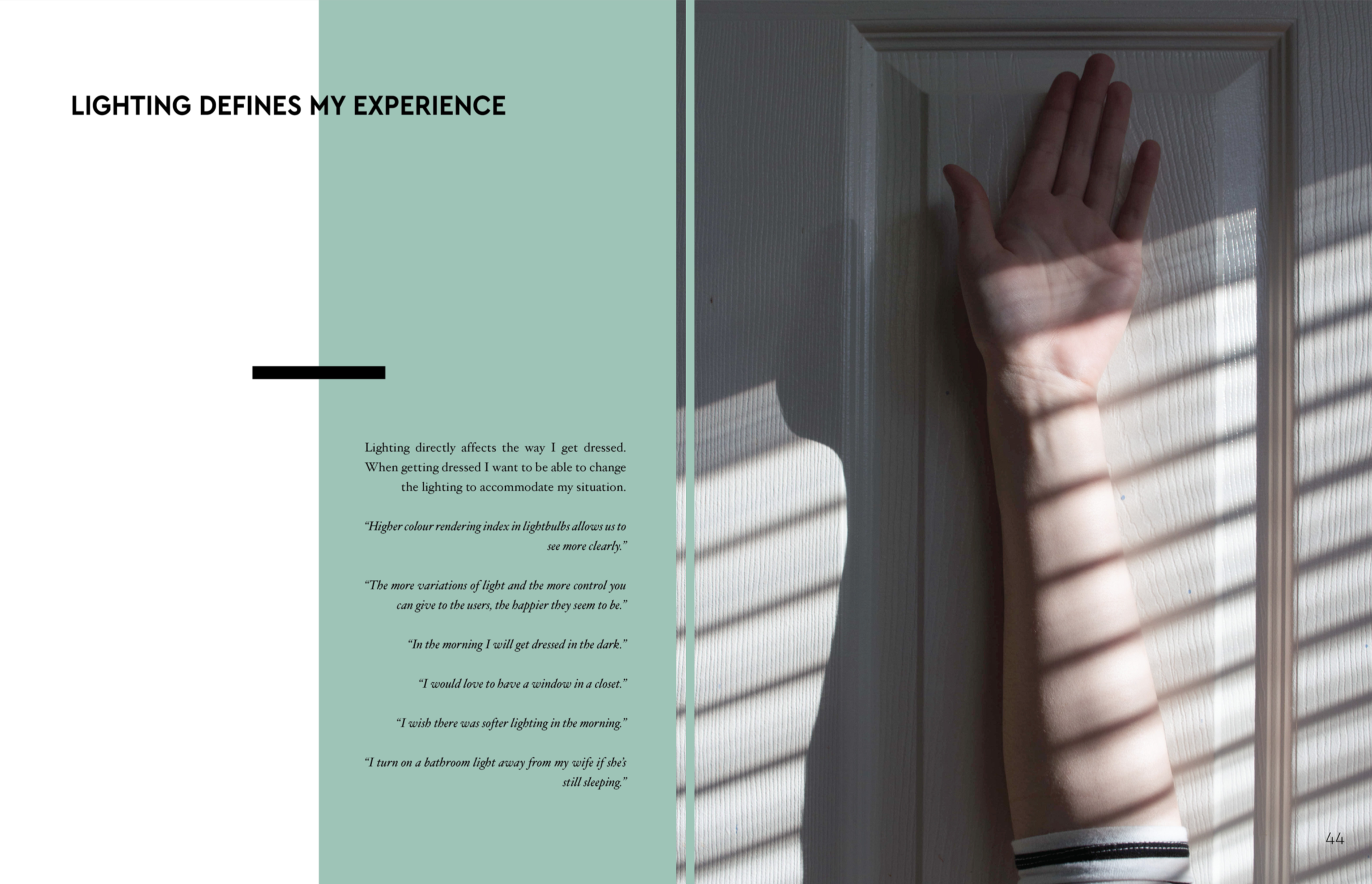The Ideal Experience of Getting Dressed
A design research project.
Role: Design Researcher & Graphic Designer
Duration: 10 weeks
Overview: Dressing ourselves is a necessary step in our daily routine, and we believe that it is best to enjoy the process. The goal of this generative research was to understand the ideal experience of that process by collecting actionable insights, using the following four primary research techniques:
I. Observe
II. Probe
III. Interview
IV. Participate
What is the ideal experience of getting dressed?
What influences the way one might dress and why?
What role does getting dressed have to play in one’s life?
I. Observe
Through participant and non-participant observations, we gathered initial insights on what might be important to people when picking out their outfits for different scenarios. This revealed the possible anchors of broad trends that might appear as we kept collecting data.
overheard during non-participant observations:
“Feels like summer — thought it’d be cold outside. Didn’t think it would be so hot.”
“Do you think I should take off my under shirt?”
“That’s why I love wearing scarves! I could just put this back on. Got a little chilly.”
“My husband’s wearing shorts! Haha!”
Participant observations:
II. Probe
An interactive data collection method that we created and launched at a public art market, allowing us to interact with anyone who wanted to participate in our research through surveys and polls.
A sketch of cultural probe ideas + questions to probe the participants.
III. Interview
I conducted four 1-hour long in-depth interviews, consulting two industry professionals about the fields of clothing retail and textiles, as well as lighting in interior design. Along with two “regular” people, about their daily process of getting dressed.
IV. Participate
We conducted a sensory cue kit workshop where people were invited to come into a room that we set up with different prompts designed to elicit responses.
Conducted in a bedroom setting, our sensory cue kit involved the participant organising clothes into a wardrobe, interacting with clothes and accessories that were laid out, choosing textures from fabric swatches and an open card sort.
Affinitisation
The synthesis of all collected data. Our process included four stages: yellows, blues, pinks, and greens.
With each stage getting narrower, it eventually revealed the framework. We affinitised the data according to its essence and not by keywords, in the voice of the users.
The Outcome
For some, getting dressed is a form of expression, a form of comfort, a form of defense to combat their insecurities.
For others, it is about efficiency and practicality, influenced by their space, lighting, organisational methods.
Below is the visualisation of our findings; a framework that was built upon the synthesis of all our collected data, creating a human-centred design criteria for the design teams of the relevant stakeholders.
Storytelling
With the theme of getting dressed, we decided to bring to life the framework of the design criteria with visual storytelling, in the form of a fashion magazine.
All photographs and illustrations belongs to us.
Takeaways & Reflection
This class was a phenomenal experience for me. I learnt the importance, power, and potential that design research holds, to transform products and services into that which is anchored in rich human-centred data. Empowered to design things that are truly beneficial for people. My favourite part of this class was to witness everything come together — from observations through to affinitisation, followed by the storytelling through the magazine. It was so rewarding and it’s so fascinating to learn so much about so many people.


